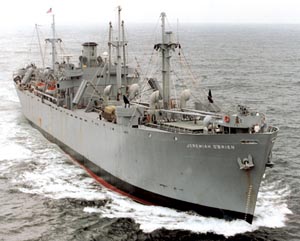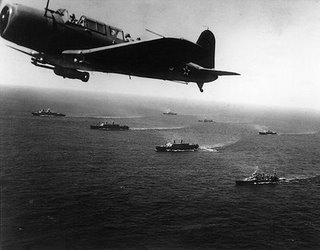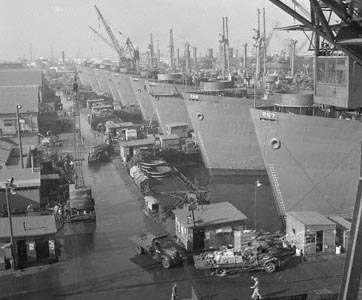Introduction to Digital Spectrum: To provide an analogy of starting with Digital Spectrum, I would like to go back a few decades to the 1940s. It's now the middle of 1943 and the Battle of the Atlantic in World War II is well underway. Two years before, the Lend-Lease program was established to provide a method of supplying war materials to the shores of Britian, as she stood alone. The North Atlantic ocean was the key route for delivery of goods and services in this effort, and the shipping lanes needed to be protected. Technology tools, organization of shipping convoys and the overall design and management of the supply chain were vital to success.
DSX Skeleton: Today, the foundation of your website implementation is the DSX skeleton. It provides a very comfortable menu structure and

application framework to manage your website and business. Likewise, in World War II, the foundation of the merchant shipping fleet was the "Liberty Class" ship. About 2500 of these were built and they formed the foundation of the merchant navy for the next 25 years. The creation of your website in phase one is like the rolling out of a new Liberty ship from Baltimore, Maryland. With your ship in harbor, the goal is to cross the Atlantic Ocean and deliver the cargo of goods and services to your customers. Our goal at Digital Spectrum is to help you cross the ocean safely.
DSX Convoy System: While a single Liberty ship has some basic armament for protection, crossing the Atlantic Ocean with its cargo all by itself, doesn't make much sense. Assigning supporting escort ships and air cover for a single Liberty ship's passage through the Atlantic is possible, but is not cost-effective nor pratical. So, it's important for each Liberty ship to join the convoy to make the journey. That does, however, make the planning of that Liberty ship's cargo delivery more difficult since it has to "blend in" as part of a convoy, and not dominate the convoy resources individually and set the agenda like if it were crossing independently. Yet, the main benefits of the convoy system are worth it. The combined strength of many merchant ships blend together to share the convoy protection resources; and this is the key to success and the most practical way to get the job done.
Basically, you might say Digital Spectrum is providing the convoy system for a series of customer business systems, all running live at the same time. We provide the framework for the convoy, starting with frigates, corvettes, small escort aircraft carriers, destroyers, etc., as well as constantly developing improved sonar and anti-

submarne weapons. In addition, we are trying to provide full atlantic air cover for spotting U-boats ahead of time, both the single U-boat alone and those gathered into wolf packs. And when needed, trying to steer the convoy away from the occassional menacing surface ship, like an enemy battleship or heavy cruiser.
Our goal is to improve the convoy system to increase the number of patrols around the entire convoy fleet throughout the journey with you. At Digital Spectrum we want to grow our convoy fleet coverage to handle your specific project needs as quickly as possible, and not just if you are under attack. To do this though we still need to keep the convoy structure in tact at all times to maintain the stategic direction for overall control of the shipping. That means we set first a minimum speed, and then navigation rules for the individual ships to follow, to help keep the convoy moving at the best speed possible. You might compare this aspect to the retainer task group setup charge and the associated tasks grouping and tasks splitting we need to do. Otherwise, if convoy resources are focused disproportionately on protection of individual ships, it creates more danger to the convoy and the the vital assigned roles the escorting ships need to manage all ships. And our job is the same, to organize the tasks in the most efficient way possible.
Scheduling around the different needs of the individual ships is probably the most difficult part of the convoy system. Once however, everyone is working within the rules of the convoy, and implementing these rules in their own ship's cargo planning, the day by day, month by month, execution of the convoy in moving tonnage, will start to be manageable and create the desired results.
Retainer Project Cargo Crates: The retainer is basically the standard container size used to load up the Liberty ship goods for transporting across the ocean.

At the convoy planning level, so that the maximum amount of shipping tonnage can be supported in a convoy, it makes sense to organize and control the size of the cargo crates. And isolating cargo of irregular sizes and shapes to insure the ship can carry as much cargo overall as it can. So Retainer Projects and Task Groups need to be organized and planned to optimize time. That means evaluting the mix of different customer projects and subprojects each day to execute the tasks.
The Retainer Task Group essentially is one or more tasks that are similar in nature, and can be worked on at the same time more easily. Your ability to help us organize these tasks will make it that much easier to move projects through faster, including the intial review process, which often delays a project's start.
Trying to organize task requests, their definition, priority, budgetting, and so forth, does take discipline, but once it's flowing smoothly, the stability of the process becomes a great reward. A smooth, predictable process is more valuable than an occasionally fast, but unstable process. Project task sizes and setup rules are the building blocks to getting that done.
Summary: Details about retainer projects going forward is explained further in the system once you login for the first time. We are hoping you can help us as part of the convoy; we see the great improvements occuring as we finish out this challenging year 1943.. and then look to smoother and faster sailing in 1944 and 1945, where victories for all loom ahead!
 PRICING AND SERVICES
PRICING AND SERVICES
 DEMOS
DEMOS
 CONTACT
CONTACT
 application framework to manage your website and business. Likewise, in World War II, the foundation of the merchant shipping fleet was the "Liberty Class" ship. About 2500 of these were built and they formed the foundation of the merchant navy for the next 25 years. The creation of your website in phase one is like the rolling out of a new Liberty ship from Baltimore, Maryland. With your ship in harbor, the goal is to cross the Atlantic Ocean and deliver the cargo of goods and services to your customers. Our goal at Digital Spectrum is to help you cross the ocean safely.
application framework to manage your website and business. Likewise, in World War II, the foundation of the merchant shipping fleet was the "Liberty Class" ship. About 2500 of these were built and they formed the foundation of the merchant navy for the next 25 years. The creation of your website in phase one is like the rolling out of a new Liberty ship from Baltimore, Maryland. With your ship in harbor, the goal is to cross the Atlantic Ocean and deliver the cargo of goods and services to your customers. Our goal at Digital Spectrum is to help you cross the ocean safely. submarne weapons. In addition, we are trying to provide full atlantic air cover for spotting U-boats ahead of time, both the single U-boat alone and those gathered into wolf packs. And when needed, trying to steer the convoy away from the occassional menacing surface ship, like an enemy battleship or heavy cruiser.
submarne weapons. In addition, we are trying to provide full atlantic air cover for spotting U-boats ahead of time, both the single U-boat alone and those gathered into wolf packs. And when needed, trying to steer the convoy away from the occassional menacing surface ship, like an enemy battleship or heavy cruiser.
 VB.NET | VB6 | C#
VB.NET | VB6 | C#